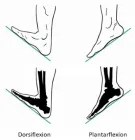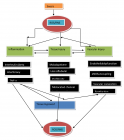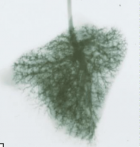Abstract
Case Report
Hazardous Effects of Malaria for Patients Residing in Low-probability Malaria Areas: A Case Report and Critiques of the Literature for Cerebral Malaria
Janvier Nzayikorera*
Published: 13 September, 2023 | Volume 4 - Issue 2 | Pages: 076-079
Despite decades of global and country commitments towards eradicating malaria, malaria remains the most hazardous parasitic disease and the most common cause of fever for humans, especially in tropical countries. Plasmodium falciparum causes 90% of malaria cases. Coma [Cerebral Malaria (CM)], acidosis, hypoglycemia, severe anemia, renal dysfunction, and pulmonary edema are the most common complications of malaria caused by Plasmodium falciparum and the most common cause of death related to malaria. People from less prevalent malaria areas are at high risk of developing these complications. A 16-year-old male from a low malaria transmission area was diagnosed with CM. Prior to developing CM, he was treated with Coartem. CM is a medical emergency and one of the forms of severe malaria. CM has high mortality and morbidity rates. Yet, international health-related agencies, funders, and policy-makers are unfamiliar with it. The continuous occurrence of CM validates the considerable need for global investment in malaria control and elimination programs. Early administration of Artesunate to all patients suspected of having severe malaria would reduce global malaria-related mortality and morbidity. Simple tests, such as the determination of malaria parasitic density either with thin or thick blood smears, may influence the proper management of all severe malaria cases. However, in clinical practice, the determination of malaria parasitic density is not routinely done. Further commitments are needed to ensure routine determination of malaria parasitic density for all suspected severe malaria cases. Moreover, further commitments are needed to guarantee the proper management of CM because it is a major cause of reversible encephalopathy in tropical countries.
Read Full Article HTML DOI: 10.29328/journal.jcmhs.1001038 Cite this Article Read Full Article PDF
Keywords:
Malaria; Cerebral malaria; Severe malaria; Complicated malaria; Plasmodium falciparum; Low transmission malaria areas
References
- Dennis JLKL, Hauster SL. Jameeson JL, Fauci AS, Longo DL, ed. Harrison’s Principles of Medicine. 19th Edition, McGraw-Hill Companies. Inc. 2015.
- WHO global malaria programme World malaria report, WHO Libr. Cat. Data. 2014. https://www.who.int/publications-detail-redirect/9789241564830.
- Global technical strategy for malaria 2016–2030, World Heal. Organ. 2016; 1–35. https://www.who.int/publications-detail-redirect/9789240031357.
- Word Malaria Report 2021. 2021. https://www.who.int/teams/global-malaria-programme/reports/world-malaria-report-2021.
- World malaria report 2020: 20 years of global progress and challenges. Geneva: World Health Organization; 2020. Licence: CC BY-NC-SA 3.0 IGO. 2020. https://www.who.int/teams/global-malaria-programme/reports/world-malaria-report-2020.
- Chen Q, Schlichtherle M, Wahlgren M. Molecular aspects of severe malaria, Clin. Microbiol. Rev. 2000; 13:439–450. https://doi.org/10.1128/CMR.13.3.439-450.2000.
- World Malaria Report 2017. 2017.
- Pasvol G. The treatment of complicated and severe malaria, Br. Med. Bull. 2005; 75–76:29–47. https://doi.org/10.1093/bmb/ldh059.
- Ministry of health, annual health sector performance report financial year 2020/21. 2021.
- T Republic. Intergrated management of malaria training, 2019. https://files.aho.afro.who.int/afahobckpcontainer/production/files/3_Intergrated_management_of_malaria_training_Health_workers_manual.pdf.
- Valentim M. Cerebral malaria. 2018; 8:216–221. https://doi.org/10.15406/jnsk.2018.08.00313.
- Dondorp AM. Pathophysiology, clinical presentation and treatment of cerebral malaria, Neurol. Asia. 2005; 67–77. http://www.neurology-asia.org/articles/20052_067.pdf.
- A Practical Handbook Management of Severe Malaria, 3rd ed., World Health Organization, 2012. https://apps.who.int/iris/handle/10665/79317.
- Alister GC. M. Fadzli, K. Mustaffa, R.P. Pradeep, Cytoadherence and Severe Malaria, Malays J Med Sci. 2012; 19:5-18. https://www.ncbi.nlm.nih.gov/pmc/articles/PMC3431742/.
- Department: Health Republic of South Africa, National Guidelines for the Treatment of Malaria, South Africa. 2019. https://www.nicd.ac.za/wp-content/uploads/2017/03/National-Guidelines-for-Malaria-Treatment-SEPTEMBER-2019-Update-WITH-FRONT.pdf.
- Mankhambo L, Phiri A, Mallewa M, Molyneux M. Management of severe malaria, Futur. Med. 2010; 7:27–38. https://doi.org/10.2217/thy.09.81.
- WHO Guidelines for malaria, Geneva: World Health Organization; 2023 (WHO/UCN/GMP/ 2023.01). License: CC BY-NC-SA 3.0 IGO, WHO. 2023. http://apps.who.int/bookorders.
- WHO Guidelines for Malaria - 13 July 2021, World Heal. Organ. 2021; 5–65.
Figures:
Similar Articles
-
Hazardous Effects of Malaria for Patients Residing in Low-probability Malaria Areas: A Case Report and Critiques of the Literature for Cerebral MalariaJanvier Nzayikorera*. Hazardous Effects of Malaria for Patients Residing in Low-probability Malaria Areas: A Case Report and Critiques of the Literature for Cerebral Malaria. . 2023 doi: 10.29328/journal.jcmhs.1001038; 4: 076-079
Recently Viewed
-
Cystoid Macular Oedema Secondary to Bimatoprost in a Patient with Primary Open Angle GlaucomaKonstantinos Kyratzoglou*,Katie Morton. Cystoid Macular Oedema Secondary to Bimatoprost in a Patient with Primary Open Angle Glaucoma. Int J Clin Exp Ophthalmol. 2025: doi: 10.29328/journal.ijceo.1001059; 9: 001-003
-
Metastatic Brain Melanoma: A Rare Case with Review of LiteratureNeha Singh,Gaurav Raj,Akshay Kumar,Deepak Kumar Singh,Shivansh Dixit,Kaustubh Gupta*. Metastatic Brain Melanoma: A Rare Case with Review of Literature. J Radiol Oncol. 2025: doi: ; 9: 050-053
-
Depression as a civilization-deformed adaptation and defence mechanismBohdan Wasilewski*,Olha Yourtsenyuk,Eugene Egan. Depression as a civilization-deformed adaptation and defence mechanism. Insights Depress Anxiety. 2020: doi: 10.29328/journal.ida.1001013; 4: 008-011
-
Drinking-water Quality Assessment in Selective Schools from the Mount LebanonWalaa Diab, Mona Farhat, Marwa Rammal, Chaden Moussa Haidar*, Ali Yaacoub, Alaa Hamzeh. Drinking-water Quality Assessment in Selective Schools from the Mount Lebanon. Ann Civil Environ Eng. 2024: doi: 10.29328/journal.acee.1001061; 8: 018-024
-
Rapid Microbial Growth in Reusable Drinking Water BottlesQishan Liu*,Hongjun Liu. Rapid Microbial Growth in Reusable Drinking Water Bottles. Ann Civil Environ Eng. 2017: doi: 10.29328/journal.acee.1001007; 1: 055-062
Most Viewed
-
Evaluation of Biostimulants Based on Recovered Protein Hydrolysates from Animal By-products as Plant Growth EnhancersH Pérez-Aguilar*, M Lacruz-Asaro, F Arán-Ais. Evaluation of Biostimulants Based on Recovered Protein Hydrolysates from Animal By-products as Plant Growth Enhancers. J Plant Sci Phytopathol. 2023 doi: 10.29328/journal.jpsp.1001104; 7: 042-047
-
Sinonasal Myxoma Extending into the Orbit in a 4-Year Old: A Case PresentationJulian A Purrinos*, Ramzi Younis. Sinonasal Myxoma Extending into the Orbit in a 4-Year Old: A Case Presentation. Arch Case Rep. 2024 doi: 10.29328/journal.acr.1001099; 8: 075-077
-
Feasibility study of magnetic sensing for detecting single-neuron action potentialsDenis Tonini,Kai Wu,Renata Saha,Jian-Ping Wang*. Feasibility study of magnetic sensing for detecting single-neuron action potentials. Ann Biomed Sci Eng. 2022 doi: 10.29328/journal.abse.1001018; 6: 019-029
-
Pediatric Dysgerminoma: Unveiling a Rare Ovarian TumorFaten Limaiem*, Khalil Saffar, Ahmed Halouani. Pediatric Dysgerminoma: Unveiling a Rare Ovarian Tumor. Arch Case Rep. 2024 doi: 10.29328/journal.acr.1001087; 8: 010-013
-
Physical activity can change the physiological and psychological circumstances during COVID-19 pandemic: A narrative reviewKhashayar Maroufi*. Physical activity can change the physiological and psychological circumstances during COVID-19 pandemic: A narrative review. J Sports Med Ther. 2021 doi: 10.29328/journal.jsmt.1001051; 6: 001-007

HSPI: We're glad you're here. Please click "create a new Query" if you are a new visitor to our website and need further information from us.
If you are already a member of our network and need to keep track of any developments regarding a question you have already submitted, click "take me to my Query."



















































































































































